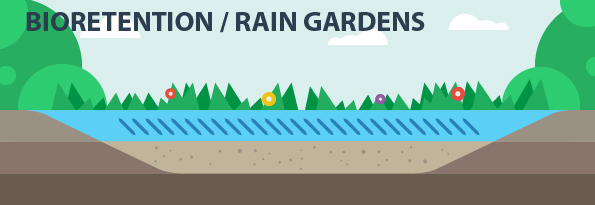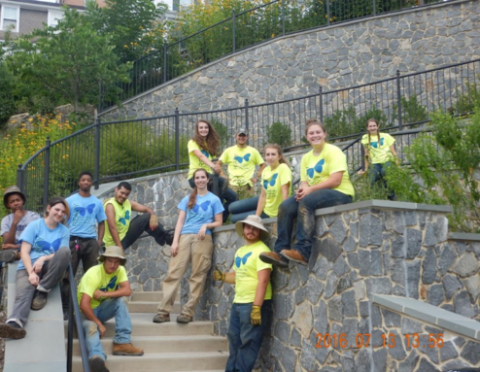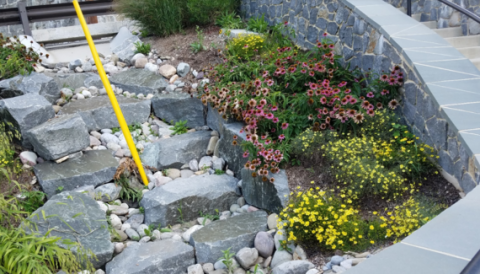Ellicott City Stormwater Staircase

Parts of the Chesapeake Bay watershed contain a high percentage of impervious cover – paved or other hard surfaces such as roofs and roadways that prevent rain water from being absorbed into the ground. Instead, water runs along these surfaces, collecting trash and substances such as motor oil, lawn fertilizers, and pesticides. This polluted stormwater flows into streams and rivers, where it threatens aquatic ecosystems and public health.
Effective stormwater management, on the other hand, creates safe paths for polluted runoff to be captured and filtered through the ground before it reaches waterways. This helps keep the environment clean and our communities healthy!

Project Location: Ellicott City, MD
Problem: A staircase connecting Ellicott City’s historic Main Street to a public parking lot had become unsafe and unusable, due to chronic flooding issues as well as an earthquake in 2013.
Solution: Howard County and Ellicott City used the needed stairway repair as an opportunity to not only improve public safety but also to treat two acres of stormwater flowing into the Patapsco River. The innovative “stormwater staircase” collects stormwater from Main Street and sends it into a flume that is connected to a series of bioretention cells, including a rock channel and a waterfall. Stormwater is slowed by a series of hairpin turns and channeled to densely-planted native rain gardens where it can be absorbed. Signage along the staircase provides educational information, and a video about the project is played on a loop in Howard County government buildings. This attractive and effective solution won a “Best Ultra Urban Design” award from the Chesapeake Stormwater Network in 2017.
Cost: $1.54 million; Howard County READY (Restoring the Environment and Developing Youth) Program crews planted and maintained portions of the project
Partners: Howard County Bureau of Environmental Services; McCormick & Taylor Architects



